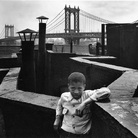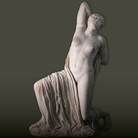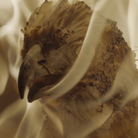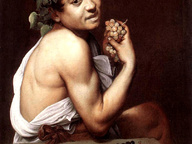Tina Modotti. Retrospettiva

Tina Modotti. Retrospettiva, Palazzo Madama, Torino
Dal 1 May 2014 al 5 October 2014
Torino
Luogo: Palazzo Madama
Indirizzo: piazza Castello
Orari: da martedì a sabato 10-18; domenica 10-19
Enti promotori:
- Città di Torino
Costo del biglietto: intero 8 €, ridotto 5 €, gratuito bambini da 0 a 14 anni
Telefono per informazioni: +39 011 4429523
E-Mail info: ufficio.stampa@fondazionetorinomusei.it
Sito ufficiale: http://www.palazzomadamatorino.it
A 90 anni dalla sua prima mostra, dal 1 maggio al 5 ottobre 2014, Palazzo Madama rende omaggio a Tina Modotti (1896-1942) la cui eccezionale vicenda umana, artistica e politica l’ha resa una delle fotografe più celebri al mondo e una delle personalità più eclettiche del secolo scorso. L’esposizione, che gode del patrocinio del Comune di Torino, è ospitata nella Corte Medievale di Palazzo Madama e nasce dalla collabora- zione tra la Fondazione Torino Musei, l’associazione culturale Cinemazero e la casa editrice Silvana Editoriale.
Sempre, quando le parole “arte” e “artistico” vengono applicate al mio lavoro fotografico, io mi sento in disaccordo... Mi considero una fotografa, niente di più. Se le mie foto si differenziano da ciò che viene fatto di solito in questo campo, è precisamente perché io cerco di produrre non arte, ma oneste fotografie, senza distorsioni o manipolazioni (Tina Modotti, Sulla fotografia)
La mostra copre tutto l’arco della vita di Tina, come fotografa, come musa e come attivista. Ricostruisce sia la sua straordinaria parabola artistica – che la vide prima attrice di teatro e di cinema in California e poi fotografa nel Messico post-rivoluzionario degli anni venti – sia la sua non comune vicenda umana. Un percorso teso a mappare l’evoluzione della sua vicenda, dagli affetti familiari ai suoi amori; dai primi scatti, influenzati dal compagno Edward Weston, alle ultime, poche, misconosciute foto scattate a Berlino, quando ormai la fotografa ammetteva l’impossibilità di continuare la sua carriera con strumenti tecnici troppo moderni, che non consentivano il suo particolare approccio, metodico e posato. Un percorso di ricerca estetica e formale, che guida lo spettatore nell’evoluzione degli stili e delle tecniche della Modotti, passando dagli still life e dagli scatti figli dell’Estridentismo del primo periodo, per arrivare – senza strappi, ma progressivamente – ai ritratti delle donne di Tehuantepec, passando attraverso le immagini più politiche e “rivoluzionarie”. Una fotografia sempre calibrata e meditata, con bianchi e neri pastosi ma estremamente vari nelle tonalità, frutto di lunghe riflessioni ed esperimenti. Nuclei definiti e coerenti che tracciano la linea di ricerca della fotografa, declinata in fasi e temi diversi: Stadio (Messico, 1925) e Serbatoio n. 1 (Messico, 1926) testimoniano l’attento lavoro per catturare i volumi, enfatizzati da tagli prospettici arditi e rigorosamente geometrici, a cui fa da contraltare l’ammorbidirsi delle linee delle nature morte come El Manito (Messico, 1924) o la celeberrima Calle (Messico 1924 ca), dove il contrasto tra luce e ombra dona una concretezza quasi carnale agli still life. Nei ritratti della stagione messicana l’indagine si concentra sul soggetto umano, con tagli inusuali, volti a marcare la dimensione emotiva, parallela al suo impegno politico, umano e sociale a fianco dei protagonisti, ben rappresentato da fotografie come Julio Antonio Mella sul letto di morte (Messico, 1929) e Bambina che prende il latte (Messico, 1926) o dal famoso scatto della Marcia di campesinos (Messico, 1928). Fondamentale per completare la panoramica su questa figura è poi la serie di suoi ritratti fatti dal compagno Edward Weston, dove la forza dirompente della presenza fisica della Modotti ne dichiara anche la consapevolezza e l’aderenza totale a una precisa idea del “fare fotografia”, come testimoniano Tina che recita (Messico, 1924) e The White Iris (s.l., 1921), portando a una rara disinvoltura da una parte e dall’altra dell’o- biettivo. Una Modotti che cerca soluzioni alle diverse sfide fotografiche che si pone negli anni e che trovano conferma anche nelle lettere, esposte in mostra, a Weston, maestro e amante con cui condivide un percorso artistico mai esausto.
Un cammino che educa l’occhio dello spettatore contemporaneo, riportandolo alla misura calibrata e meditata che caratterizza tutta l’opera della Modotti, cogliendo la forza caratteristica della fotografia: il suo non voler esser a tutti i costi “arte”, ma il suo dover essere qualitativamente valida per poter raccontare il mondo e gli infiniti aspetti della vita.
Sempre, quando le parole “arte” e “artistico” vengono applicate al mio lavoro fotografico, io mi sento in disaccordo... Mi considero una fotografa, niente di più. Se le mie foto si differenziano da ciò che viene fatto di solito in questo campo, è precisamente perché io cerco di produrre non arte, ma oneste fotografie, senza distorsioni o manipolazioni (Tina Modotti, Sulla fotografia)
La mostra copre tutto l’arco della vita di Tina, come fotografa, come musa e come attivista. Ricostruisce sia la sua straordinaria parabola artistica – che la vide prima attrice di teatro e di cinema in California e poi fotografa nel Messico post-rivoluzionario degli anni venti – sia la sua non comune vicenda umana. Un percorso teso a mappare l’evoluzione della sua vicenda, dagli affetti familiari ai suoi amori; dai primi scatti, influenzati dal compagno Edward Weston, alle ultime, poche, misconosciute foto scattate a Berlino, quando ormai la fotografa ammetteva l’impossibilità di continuare la sua carriera con strumenti tecnici troppo moderni, che non consentivano il suo particolare approccio, metodico e posato. Un percorso di ricerca estetica e formale, che guida lo spettatore nell’evoluzione degli stili e delle tecniche della Modotti, passando dagli still life e dagli scatti figli dell’Estridentismo del primo periodo, per arrivare – senza strappi, ma progressivamente – ai ritratti delle donne di Tehuantepec, passando attraverso le immagini più politiche e “rivoluzionarie”. Una fotografia sempre calibrata e meditata, con bianchi e neri pastosi ma estremamente vari nelle tonalità, frutto di lunghe riflessioni ed esperimenti. Nuclei definiti e coerenti che tracciano la linea di ricerca della fotografa, declinata in fasi e temi diversi: Stadio (Messico, 1925) e Serbatoio n. 1 (Messico, 1926) testimoniano l’attento lavoro per catturare i volumi, enfatizzati da tagli prospettici arditi e rigorosamente geometrici, a cui fa da contraltare l’ammorbidirsi delle linee delle nature morte come El Manito (Messico, 1924) o la celeberrima Calle (Messico 1924 ca), dove il contrasto tra luce e ombra dona una concretezza quasi carnale agli still life. Nei ritratti della stagione messicana l’indagine si concentra sul soggetto umano, con tagli inusuali, volti a marcare la dimensione emotiva, parallela al suo impegno politico, umano e sociale a fianco dei protagonisti, ben rappresentato da fotografie come Julio Antonio Mella sul letto di morte (Messico, 1929) e Bambina che prende il latte (Messico, 1926) o dal famoso scatto della Marcia di campesinos (Messico, 1928). Fondamentale per completare la panoramica su questa figura è poi la serie di suoi ritratti fatti dal compagno Edward Weston, dove la forza dirompente della presenza fisica della Modotti ne dichiara anche la consapevolezza e l’aderenza totale a una precisa idea del “fare fotografia”, come testimoniano Tina che recita (Messico, 1924) e The White Iris (s.l., 1921), portando a una rara disinvoltura da una parte e dall’altra dell’o- biettivo. Una Modotti che cerca soluzioni alle diverse sfide fotografiche che si pone negli anni e che trovano conferma anche nelle lettere, esposte in mostra, a Weston, maestro e amante con cui condivide un percorso artistico mai esausto.
Un cammino che educa l’occhio dello spettatore contemporaneo, riportandolo alla misura calibrata e meditata che caratterizza tutta l’opera della Modotti, cogliendo la forza caratteristica della fotografia: il suo non voler esser a tutti i costi “arte”, ma il suo dover essere qualitativamente valida per poter raccontare il mondo e gli infiniti aspetti della vita.
SCARICA IL COMUNICATO IN PDF
COMMENTI

-
 Dal 2 December 2025 al 19 February 2026
Milano | Centro Culturale di Milano
Dal 2 December 2025 al 19 February 2026
Milano | Centro Culturale di Milano
Walter Rosenblum. Il mondo e la tenerezza
-
 Dal 30 November 2025 al 12 April 2026
Gallarate | Museo MA*GA
Dal 30 November 2025 al 12 April 2026
Gallarate | Museo MA*GA
Kandinsky e l’Italia
-
 Dal 29 November 2025 al 12 April 2026
Roma | Musei Capitolini
Dal 29 November 2025 al 12 April 2026
Roma | Musei Capitolini
La Grecia a Roma
-
 Dal 22 November 2025 al 3 May 2026
Torino | Sale Chiablese dei Musei Reali
Dal 22 November 2025 al 3 May 2026
Torino | Sale Chiablese dei Musei Reali
Orazio Gentileschi. Un pittore in viaggio
-
 Dal 20 November 2025 al 25 January 2026
Firenze | Palazzo Strozzi
Dal 20 November 2025 al 25 January 2026
Firenze | Palazzo Strozzi
Andro Eradze. Bones of Tomorrow
-
 Dal 21 November 2025 al 28 March 2026
Cuneo | Complesso Monumentale di San Francesco
Dal 21 November 2025 al 28 March 2026
Cuneo | Complesso Monumentale di San Francesco
La Galleria Borghese. Da Raffaello a Bernini. Storia di una collezione


